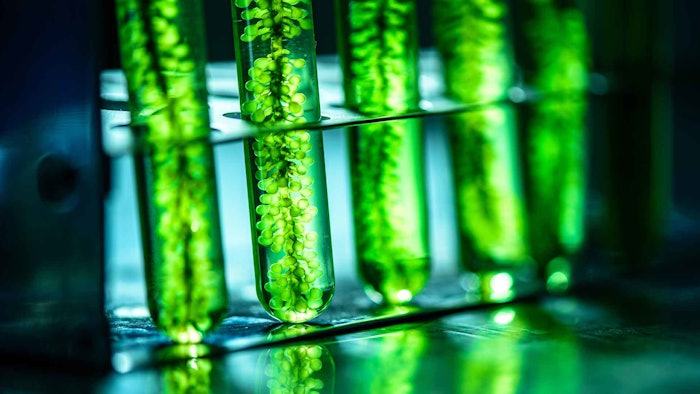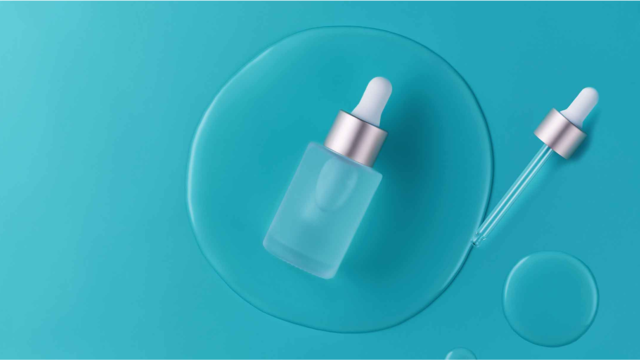
Tammy Yaiser (TY) is a product innovator and developer, and was the lead formulator behind Algenist’s award-winning advanced biotechnology formulations. For her work formulating for Algenist, Yaiser was awarded a U.S. patent for microalgal oil technology. In this exclusive interview, she shares her views of how biotechnology not only fits into, but also advances beauty innovation.
C&T: How does biotech fit into beauty? How has it advanced beauty in recent years?
TY: Biotech in beauty has advanced profoundly in recent years. It took fire for a variety of reasons, advancing beauty as the industry sought to move away from animal-based sources and ingredients derived from petrochemicals, to find sustainable plant and nature-based alternatives.
Biotechnology is a powerful tool that helps to answer consumer requirements. With the ethos of the clean beauty movement, consumers have not only become more aware of where the ingredients in their products are sourced from, but also require their products be animal-free, and sustainably and ethically sourced.
In addition, over the last decade or so, incredible advancements have been made with the tools available to research and grow ingredients in the lab, instead of sourcing them from the environment. This is where biotechnology fits into beauty today – and in the future in many exciting ways, across ingredients, formulation and packaging, and spanning virtually all categories.
For example, biotechnology offers the potential to replicate and replace known commonly used ingredients with more sustainable alternatives. It also provides a pathway to discover and create new ingredients that fuel formulations with powerful and yet-to-be-imagined benefits.
And beyond the formula, biotechnology has emerging potential to transform beauty packaging with new materials that can be produced more sustainably and environmentally friendly – through its end of lifecycle, all the way to the final stages of the product’s existence.
 Beyond the formula, biotechnology has emerging potential to transform beauty packaging with new materials that can be produced more sustainably and environmentally friendly – through its end of lifecycle, all the way to the final stages of the product’s existence.Photo by Pixel-Shot at Adobe Stock
Beyond the formula, biotechnology has emerging potential to transform beauty packaging with new materials that can be produced more sustainably and environmentally friendly – through its end of lifecycle, all the way to the final stages of the product’s existence.Photo by Pixel-Shot at Adobe Stock
C&T: How can biotech leverage the benefits of microalgae and other marine resources?
TY: Biotechnology presents an exciting opportunity to leverage the benefits of microalgae and other marine resources – which are still a relatively under-explored opportunity. As stated, it offers the capability to derive sustainable alternatives to ingredients previously harvested or sourced from precious marine animals and plants.
The rise of the blue beauty movement has demonstrated consumer demand for brands that respect and improve the relationship between the beauty industry and our marine life, oceans and waterways. In the last five years, there has been substantial growth in the number of new products launched with microalgae ingredients, highlighting the demand for both performance and sustainability.
Biotechnology has allowed for innovation and the availability, both now and in the future, of beneficial ingredients derived from microalgae – a regenerative and highly productive efficient source of many high-value ingredients including oils, waxes, vitamins, minerals, proteins, antioxidants, polysaccharides and carotenoids, to name a few – to create more sustainable solutions that tap into key benefits such as skin moisturization, antioxidant protection, soothing effects and skin-brightening capabilities.
C&T: How might product developers utilize biotech in product formulating?
TY: Biotechnology and its recent profound advancements offer the product developer a breadth of new tools and in turn, a new level of creativity in innovation. Now and in the future, product developers can utilize biotechnology to source ingredients and materials that are sustainably and regeneratively grown in the lab, opening up new innovation possibilities that can potentially transform the ingredient and material landscape of the future.
C&T: What are the challenges to consider when using biotech derived ingredients?
TY: The historical challenges of using biotech-derived ingredients have been process development and cost. Biotechnology processes bring unique challenges, as they involve our interacting with nature and nurturing a living organism throughout the process, as well as working through and developing the efficient production of target molecules. Process development and scale-up can take years. In recent years, tools have advanced, evolved and become more affordable, making greater strides toward the improved commercial viability of biotechnological processes.
 The rise of the blue beauty movement has demonstrated consumer demand for brands that respect and improve the relationship between the beauty industry and our marine life, oceans and waterways.Photo by Igor Dudchak at Adobe Stock
The rise of the blue beauty movement has demonstrated consumer demand for brands that respect and improve the relationship between the beauty industry and our marine life, oceans and waterways.Photo by Igor Dudchak at Adobe Stock
C&T: What are untapped areas for biotech and marine research? Untapped applications?
TY: Biotechnology has the potential to transform every product category. Emerging research and development in biotech and marine research is tapping into a wealth of potential new ingredients, materials and applications that span across the beauty industry and beyond. These include marine-derived and sustainable replacements for highly beneficial oils, waxes, proteins, pigments, polymers, textiles and inks, to name a few.










